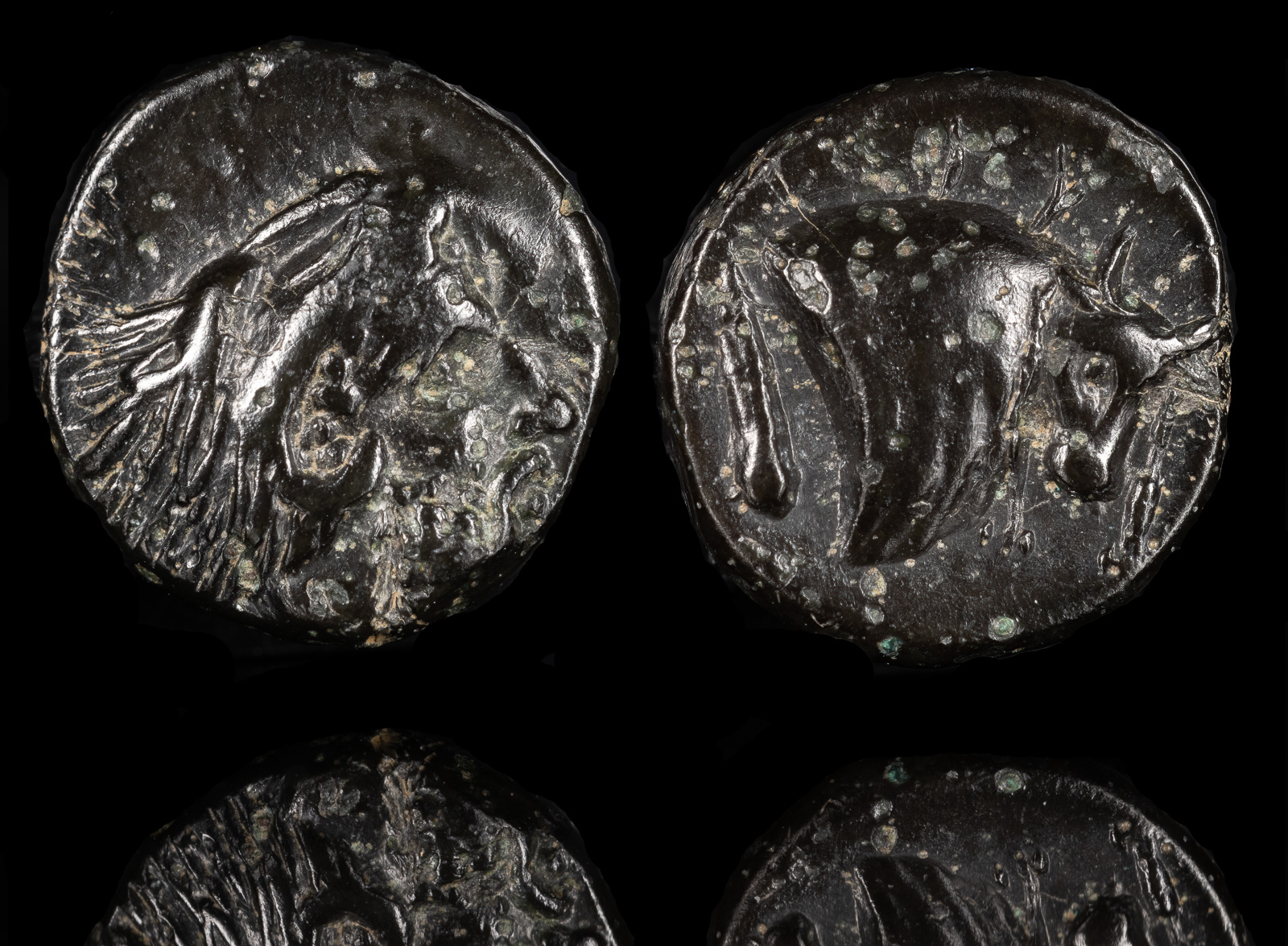
EUBOIA. Karystos
Circa 350 BCE
Chalkous AE 10.5 mm, 1.31 g, 12 h
Head of bearded Herakles to right, wearing lion’s skin headdress. Rev. KAPY Forepart of bull right, horns hung with fillets; behind, uncertain symbol – a club?.
BCD Euboia 582. HGC 4, 1570. Robinson, Olynthus III, p. 48, pl. IX, 151.
Ex J. Metzger Collection.
Ex Nomos
Karystos was considered one of the four main cities of Euboia, along with Eretria, Chalkis, and Histaia. The city took part in the Trojan War under its king Nauplios. The ancient boxer Glaukos, who won in the Olympic games, was from Glaukos.
The city was destroyed in the first Persian invasion, so they allied with Xerxes in the second attempt and were punished by the rest of Greece for this by being forced into a confederacy with Athens. In 338 BCE, the Macedonians under Philip II took control.
The comic dramatist Apollodoros and the sculptor and writer Antigonos were from Karystos.
Glaukos, a boxer from Karystos, wins in the Olympic Games.
Karystos destroyed by the Persians.
Athens attacks and takes over Karystos as punishment for their support of Xerxes.
Karystos comes under Macedonian control.
Karystos is taken by the Romans, and due to its marble quarries becomes an important center.